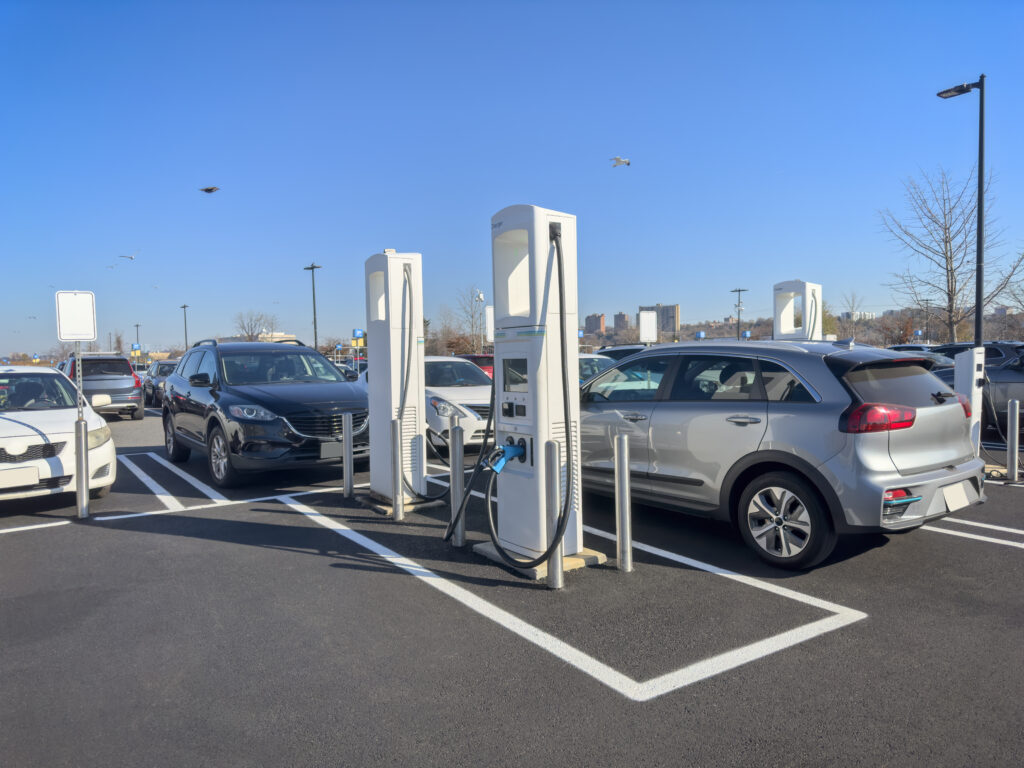Deploying ultra-fast chargers? Practical considerations when upgrading your electricity supply

The need for power
A small to mid-sized standalone convenience store typically has an electrical service of 100 to 400 amps, depending on the store’s size and electrical load. 240V translates to 24 kW to about 100 kW of available power. This service powers the store’s refrigerators, HVAC systems, lighting, and other smaller consumers.
A single ultra-fast charger requires at least 150 kW, clearly beyond the electrical power/connection of the convenience store. What should a convenience store or site owner think about if it wants to ride the coming wave of EV charging? Is upgrading the current infrastructure the only viable solution?
The apparent positive outcome is increased revenue. This would include both direct revenue from selling electricity to EVs but also from increased traffic and convenience store purchases. Some drivers who wait ten minutes for their EV to charge (a very short time compared with other charging options) might use that time to purchase a high-margin beverage or snack.
The cost and time to upgrade
Upgrading the power service requires working with the local utility company. This can be an expensive process. The upgrade costs vary widely depending on the distance to the nearest utility transformer or distribution line, the condition of the existing electrical infrastructure, and the local permitting and inspection requirements. Still, it is not uncommon to see charges surpassing $100K. This process might involve several components, including installing new electrical service equipment, upgrading the electrical service conductors and transformers, and making any necessary modifications to the existing electrical distribution system.
Moreover, the growing popularity of EVs has introduced significant strain and backlog on many utilities. Even if the financing is there, there have been reports of waiting years before such an upgrade is completed, leading to lost revenue during that year.
How much upgrade is needed?
While the EV charging revolution is here, the typical EV station currently charges only a few EVs daily. An operator might need to anticipate the demand, finding the right balance between fixed capacity and demand charges. Unlike a consumer who pays for the total amount of energy used each month, the bill for commercial customers is structured differently and typically has three main components:
- Basic service charge: This fixed charge is applied to the bill every month, regardless of the energy used.
- Energy charge: This is the actual amount of energy used during the billing period. The energy charge may be flat or vary depending on the time of day or the season.
- Demand charge: This is a charge for the maximum amount of power used during any 15- or 30-minute interval in the billing period. The demand charge reflects the utility’s cost to provide the maximum power required by the customer. Demand charges are likely if more than one vehicle is charging simultaneously. Even if this only happens once a month, the operator will pay for a significant demand since this charge is based on the peak use occurrence for each billing cycle.
If operators choose a high-power upgrade in a low utilization scenario, even a few high-demand peaks will cause high demand charges as part of their electricity bill. When utilization is very high, the demand charges as a percentage of the overall bill will be lower. A 2019 white paper by the Great Plains Institute shows that with a 150 kW capacity and ten EV charges per day, demand charges might take as much as 30% of the total energy bill and that those stations would not break even in most cases because of the demand charges. A different report by the National Renewable Energy Laboratory (NREL), shows that demand charges can account for up to 50% or more of the total electricity cost for ultra-fast charging EV stations.
There is an alternative
Instead of investing in expensive upgrades and very high basic service charges, operators can accommodate this variable demand and reduce or eliminate demand charges by adding a power booster system, such as the ZOOZTER(™)-100 system available from ZOOZ Power. This system absorbs available energy from the grid when charging is not needed and stores it using an innovative flywheel design. This energy is then used to deliver sustained bursts of high power when EVs need to charge. The system essentially smooths out the daily power consumption, delivering high-value service to drivers without the high overcapacity or demand costs.

